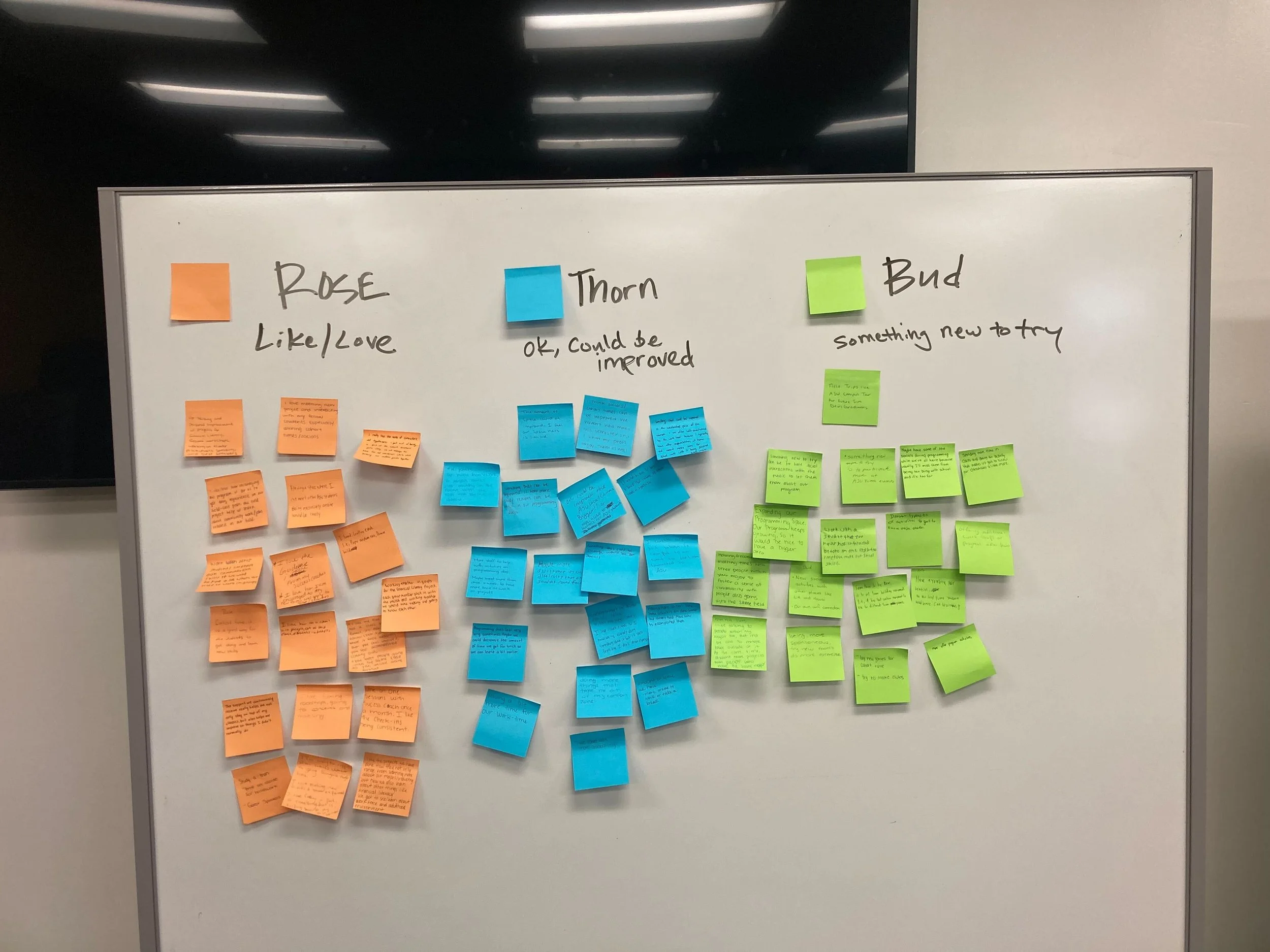Financial Literacy
The Problem
ASU’s first-generation college students are underserved in terms of financial training. While upward mobility and financial skillsets are a driving force for why they are getting a Bachelor’s degree, ASU Local has yet to build substantive programming around the issue.
The Solution
This Financial Literacy Project provides a captivating experience for ASU Local students to ‘upskill’ their financial knowledge. It incorporates shifting mindsets, subject-matter expertise, engaging scenarios, social media influencers and digital products to help students build and flex their financial muscles.
Check out how I utilized
the ADDIE Design Process to build the learning experience
Analysis
Design
Evaluation
Development
Implementation
Analysis
My Upskilling design process always starts with empathy for the end users, that is, the student learners and staff facilitators. To begin my analysis, I ran ASU Local curriculum feedback & ideation sessions with students at our Los Angeles & Yuma sites.
Before designing any sort of learning solution I gathered student feedback in lively group ideation sessions. ASU provides students with academic, career and wellbeing support, so I wanted to investigate student satisfaction and discover what their coaching needs were. I wanted to get students talking, laughing, thinking critically, and vocalizing their feedback. Students took ownership over their ideation pitches using a ‘creative matrix’ to push boundaries and think innovatively.
For students at our Washington DC and Hawaii sites, I completed additional ethnographic research in the form of 1:1 interviews and surveys to learn more about their hopes for ASU Local support.
Analysis Takeaways
Overwhelming amount of students are in the program to improve their family’s economic mobility
Financial literacy was one of the most urgent upskilling needs
Some wanted in-person facilitation and others desired opportunities for remote learning
Staff lack experience leading financial workshops, discussions & projects
Students like how culturally-relevant ASU Local curriculum feels and want it to go even further
(i.e. short videos, social media, guest speakers, experiential learning etc.)
Design
With a better understanding of student needs it was clear that I needed to create a financially-focused experiential project. In addition to my love for leading ideation sessions with others, I also consistently spark new ideas when I ideate alone. I began jotting down ideas to strategize how I might bring the project to life using my own mind-mapping exercise.
Taking into account all the analysis data, in conjunction with my own brainstorming, I defined my learning outcomes. Students would be entering the project at different ‘financial literacy’ levels so it was paramount to provide foundational learnings augmented by autonomous ways for students to upskill in a financial topic of their choosing.
Project Learning Outcomes
Normalize talking about money through foundational topics & vocabulary
Explore & Analyze one’s money personality
Share financial best practices to emphasize their social capital
Become a subject-matter expert in one financial topic through research
Develop a slide deck to present to peers
Reflect on the project
Development
In the development phase, I started creating a cache of materials to transform financial ideas into engaging learning experiences. I honed in on the resources, tools, and products that would support learner success and incorporated them into the curriculum. Utilizing a blended approach of in-person synchronous and online asynchronous facilitation, I prioritized flexibility for sites and students to implement the project as they see fit to reach the desired learning outcomes.
Implementation
During implementation, I began by leading a project training-session for coaches and site directors across the nation. In this training I reviewed the project overview, deliverables, resources, and the foundational knowledge needed to facilitate the project. Additionally, I met with coaches in 1:1 sessions to further train them on the material.
Using my teaching and coaching background I developed best practices for coaches to utilize with their students that included: scenario-based activities, group competitions, guest speakers, and final presentations with stakeholders present.
As some sites would be utilizing my curriculum materials for in-person facilitation, I shadowed the project at our Los Angeles site.
Evaluation
Successes
Site leaders, coaches, and students were largely in agreement that having a new financial literacy project available was excellent.
Student final projects came in the form of different mediums like slide decks, conference poster presentations and videos that tapped into the creativity and ownership over the project
Final project deliverables were showcased on student resumes, LinkedIn’s profiles and portfolios.
Growth Areas
Coaches and students tended to shy away from investment conversations—although foundational materials were provided in the project resources some coaches did not feel comfortable at all discussing stock markets, Roth IRA, etc.
The project was designed as a pass/fail completion grade, therefore the quality of student work varied. A more traditional rubric may be needed.
A financial educator from MidFirst Bank led a workshop for students to complement their project requirements, however many students could not attend due to schedule conflicts. Ideally all students would engage with this employer partner.
In summation, due to it’s success the ASU Local Financial Literacy Upskilling Course is now a requirement for all students to complete before they graduate.











